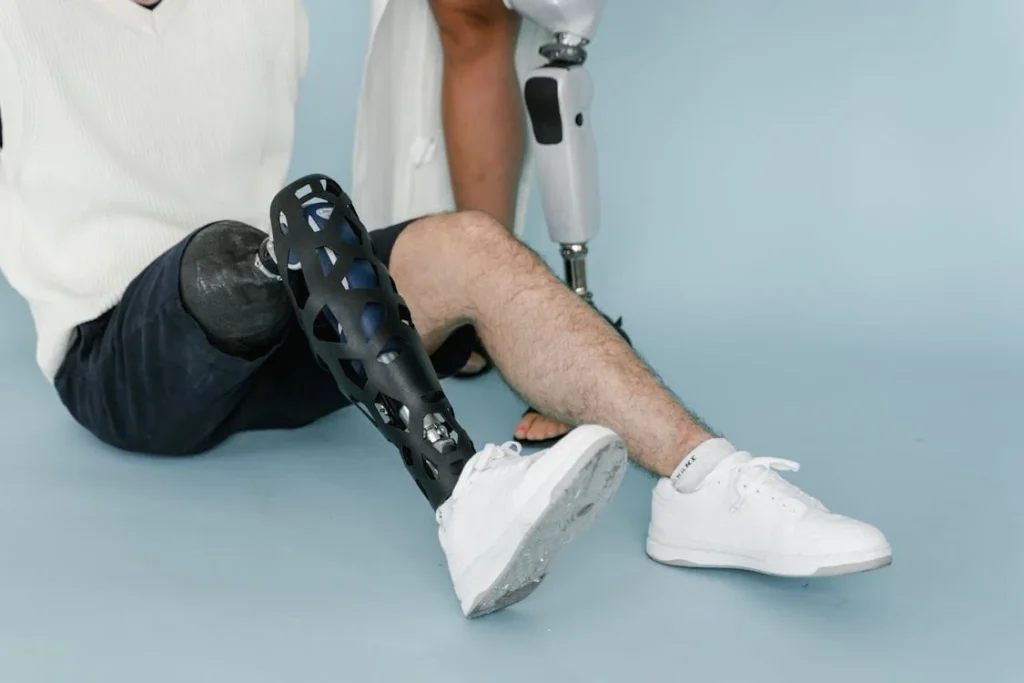Every limb loss story is different. For some, it happens slowly, after illness or infection. But for many, it comes without warning—through trauma, accidents, or unexpected injuries. These moments leave behind more than physical wounds. They change the way people move, work, connect, and see themselves. And because no two injuries are ever the same, the prosthetic solutions must be just as unique.
A “one-size-fits-all” approach doesn’t work when it comes to trauma-based limb loss. The shape, length, muscle condition, nerve health, and even the way a person uses their body every day—these things are different in every case. That’s why customized prosthetic design isn’t a luxury. It’s a necessity.
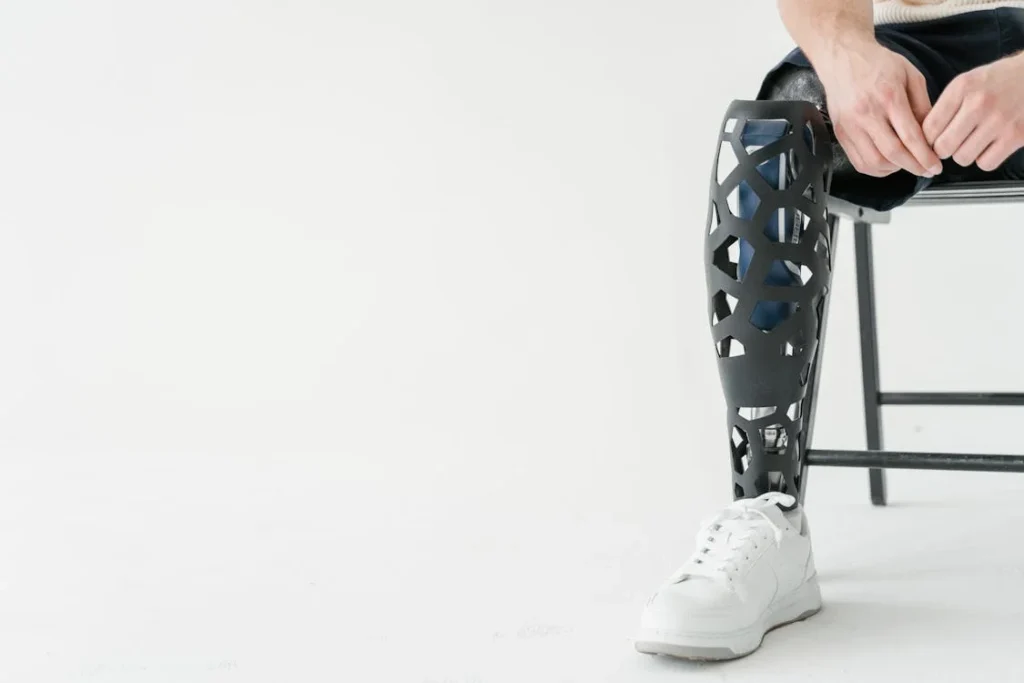
Understanding Unique Limb Trauma
When someone loses a limb due to trauma—like a car accident, machinery injury, electric shock, or explosion—the situation is rarely straightforward. These injuries often damage not just the bone, but also the muscles, nerves, tendons, and skin around the area.
Unlike surgical amputations done under controlled conditions, trauma-based amputations are sudden, messy, and complex. That’s where the need for a fully customized prosthetic truly begins.
Every Residual Limb Is Different
The part of the limb that remains after amputation is called the residual limb, or stump. In trauma cases, this area can be irregular in shape. It may have scar tissue, sensitive spots, or uneven muscle distribution.
Sometimes, bones have been shattered and healed in ways that affect alignment. Sometimes, nerves have been damaged or regrown in unexpected patterns, causing sharp pain or phantom sensations.
A prosthetic that doesn’t consider these factors can cause pain, skin breakdown, or even long-term injury. That’s why the very first step in custom design is understanding the limb itself—not just how it looks, but how it feels to the person using it.
Therapists and prosthetists spend time mapping out sensitive areas, measuring weight-bearing zones, and learning how the person uses their body in daily life.
This is not a quick measurement session—it’s a deep, ongoing conversation between expert and user. Every detail matters, because the final fit depends on it.
Functional Goals Are Always Personal
In trauma-based cases, function is never just about walking or gripping. It’s about how someone wants to live again. One person might want to lift weights again, while another just wants to hold a cup of tea.
Someone might want to ride a bike or return to their job as a carpenter. These are more than goals—they’re identity markers.
The design of a prosthetic must match those personal goals. For example, a lower limb prosthetic for someone working in agriculture might need to handle mud, uneven ground, and long days of standing.
Meanwhile, a prosthetic arm for a graphic designer must support fine motor skills, digital devices, and long hours of seated work.
This is why no trauma-based case can be treated like the last. Customization isn’t just about physical fit—it’s about daily purpose. The prosthetic should help restore the user’s lifestyle, not limit it.
Designing Around the Unpredictable
In trauma cases, the body doesn’t always behave in predictable ways. Some people heal faster than others. Swelling might come and go.
A socket that fits today might feel tight tomorrow. Pain can flare up suddenly, triggered by changes in temperature or stress.
These realities are frustrating—but they’re real. That’s why good prosthetic design must allow for flexibility. Modular parts, soft inner linings, and adjustable socket shapes are part of the solution.
So is ongoing feedback from the user, not just at the start but throughout the entire rehab journey.
Sometimes, trauma survivors have gone through multiple surgeries or revisions before getting their prosthetic. They may have experienced failed fittings in the past or lost trust in the process.
It’s part of the prosthetist’s role to rebuild that trust slowly, by listening more and rushing less.
The Role of Digital Scanning and 3D Technology
Technology has made custom design more precise than ever. In the past, prosthetics were molded by hand using plaster. Today, many modern prosthetic centers use digital scanning tools that take exact measurements of the residual limb.
This scan creates a 3D model, allowing the team to build a socket that hugs the unique shape of the limb without painful pressure points.
But the tools alone aren’t enough. It’s the skill behind them that makes the difference. A scanner can read shape, but only a human can read the story. Where does it hurt? Where does it feel strong? What are the fears? What are the hopes?
Once the scan is matched with this personal feedback, a 3D-printed socket or limb part can be made with high accuracy.
These custom parts are lighter, faster to produce, and easier to adjust than traditional materials. This can make a big difference in trauma cases, where time, comfort, and quick iteration really matter.
Psychological Safety in the Design Process
One thing that’s often ignored—but matters deeply—is how a person feels during the fitting process. Trauma can make people feel disconnected from their bodies.
The limb loss may be tied to painful memories or events. Being touched, measured, or fitted can bring some of those feelings back.
Prosthetic care teams need to be gentle, respectful, and aware of this. Custom design isn’t just technical—it’s emotional. It involves asking permission, explaining steps, and making sure the person feels in control.
That safety is just as important as the device itself. If someone doesn’t feel safe or heard, they won’t wear the prosthetic. They won’t trust it. And if it stays in the corner, it doesn’t help anyone.
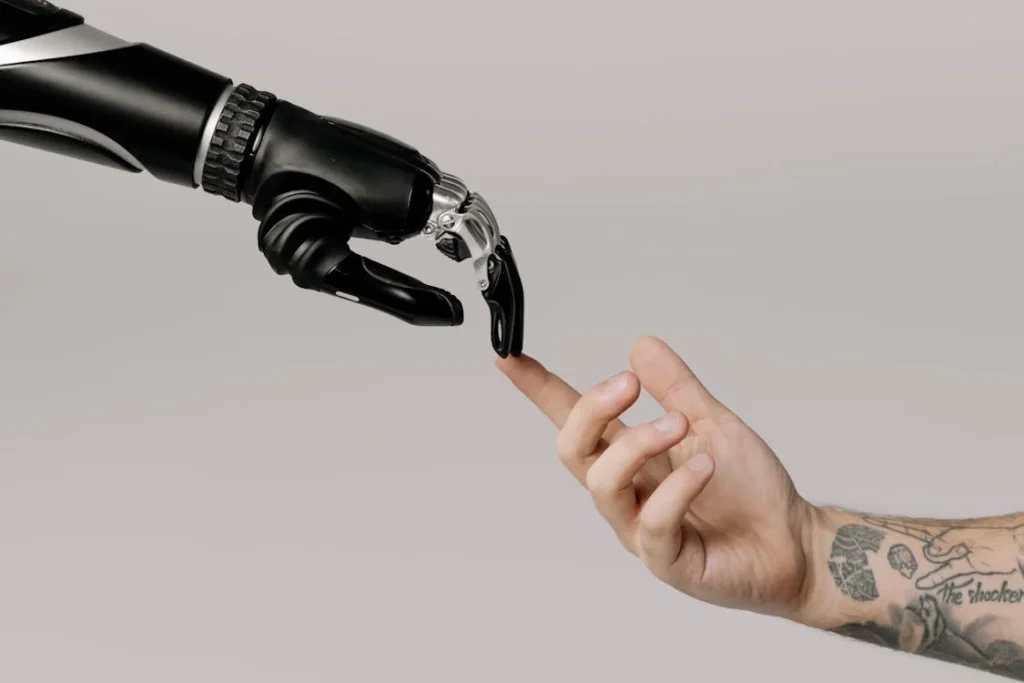
The Process of Building a Custom Prosthetic After Trauma
Designing a prosthetic for a trauma survivor isn’t just about creating a device. It’s a process that unfolds in steps, with care taken at each stage to understand the person, their body, and their goals.
For someone who has gone through sudden limb loss, this process can feel overwhelming at first. But when done right, it becomes a path to recovery, independence, and renewed identity.
The Evaluation: Listening Before Building
The journey starts with a deep evaluation. This is not simply a medical exam—it’s a full conversation. The prosthetist asks about the trauma, the healing process, daily routines, hopes for the future, and even the emotional journey so far.
Each answer gives important clues for what the prosthetic needs to do.
The residual limb is carefully checked for skin condition, shape, range of motion, and sensitivity. Photos or digital scans may be taken.
But more than that, the prosthetist wants to understand how the person moves and what they find difficult. This stage can take time, and that’s okay. Rushing leads to mistakes.
People are often surprised by how much they’re asked to share during this phase. But every detail matters. A prosthetic is not just about function—it’s about fitting into someone’s real life.
Test Sockets and Early Trials
After the evaluation, the team creates a temporary or “test” socket. This is usually made of clear plastic and helps both the prosthetist and user see how the fit feels before making a final version. It allows adjustments in pressure, height, and movement.
For someone recovering from trauma, this phase is especially important. Their limb may still be changing. Swelling may come and go. Scar tissue may feel different day to day.
That’s why this trial phase is flexible. The prosthetist will often ask the user to wear the test socket at home for short periods, taking notes on where it rubs or feels tight.
During this time, therapists may get involved to work on movement, strength, and balance. It’s not just about wearing the socket—it’s about using it in real life.
Can the person climb stairs? Get into a car? Pick up a child? The feedback from these early experiences guides the final design.
Final Fitting: Crafting the Right Fit
Once the test socket has been adjusted and approved, the team moves to build the final prosthetic. Materials are selected based on the user’s lifestyle.
For someone active, lightweight carbon fiber or flexible plastics may be used. For someone needing more cushioning, silicone liners or soft shells might be added.
Cosmetic coverings, if requested, are also created during this stage. While not everyone wants a limb that looks like a natural one, some people find it helps them feel more confident in public or at work.
Others prefer a mechanical look that embraces the technology. There is no right or wrong—only what feels best for the person using it.
The final fitting session is a careful one. It’s not just a handover. The team checks alignment, range of motion, pressure points, and overall comfort.
Adjustments can still be made. And even after the final device is ready, follow-ups are scheduled regularly.
Training the Body and Brain
A prosthetic is only as useful as the training that comes with it. For trauma survivors, using the device can feel strange at first. Movements that were once automatic—like reaching for something or walking—now take conscious thought and practice.
Occupational therapists step in at this point. They work side-by-side with the user to build skills from the ground up.
This might mean practicing balance, learning to grip with a myoelectric hand, or developing muscle memory for small tasks like buttoning a shirt.
There’s also a mental process happening here. The brain has to update its own “map” of the body. At first, the prosthetic may feel foreign.
But with practice, the brain starts to treat it like a natural extension. This process takes time and patience, and the therapist helps guide each step.
Often, therapy sessions also include emotional support. It’s normal to feel frustration, fatigue, or even sadness during training. Having a therapist who understands and keeps things encouraging makes a big difference.
Adjustments Over Time
No prosthetic is ever truly “finished.” As the person grows, heals, and changes, the prosthetic must evolve too. Muscles may get stronger, habits may shift, or new challenges may come up. That’s why ongoing support is a key part of custom care.
Regular check-ins with the prosthetist allow small issues to be caught early—before they become big problems. Maybe a socket has become too loose, or a joint starts making noise. These things are fixable, but only if they’re brought up.
Some trauma survivors go on to use different prosthetics for different activities—one for daily use, another for sport or travel. Others may upgrade to newer tech as their needs evolve.
Custom design makes these transitions smoother because it’s already built around the individual.
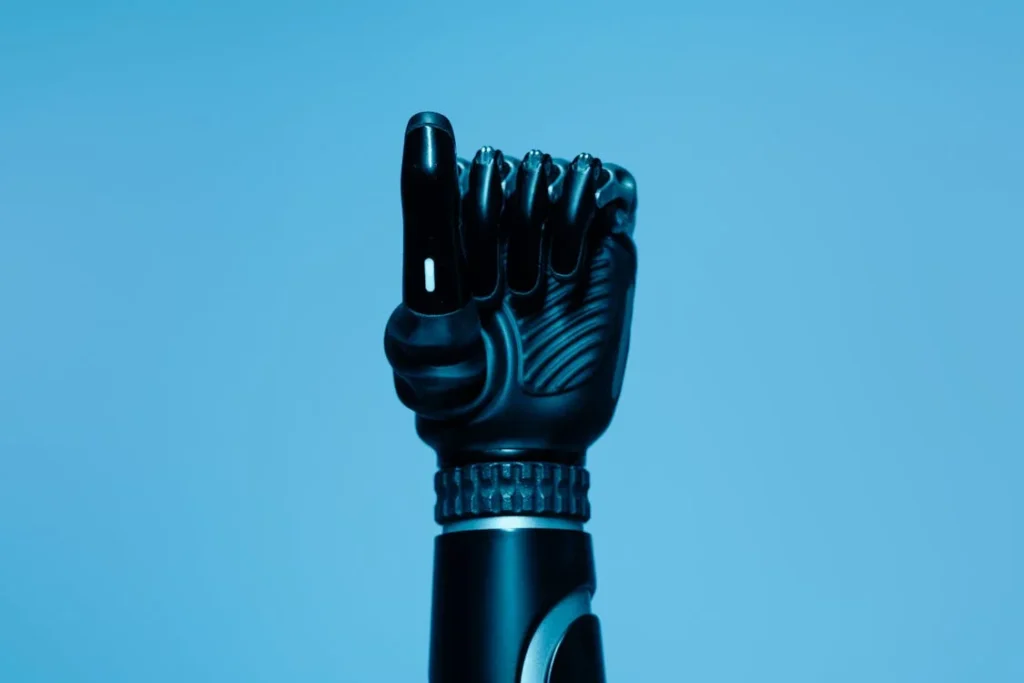
Challenges in Custom Prosthetic Design for Trauma Cases
Creating a custom prosthetic for someone who’s lost a limb due to trauma is not easy work. It involves more than just making a well-shaped socket or attaching a mechanical limb.
The process is full of challenges—some technical, some emotional, and some completely unexpected. But understanding these challenges helps us see why personalized design matters so much, and why it’s worth the effort.
The Body Doesn’t Always Follow the Plan
One of the biggest challenges is that the human body doesn’t behave in a fixed way. A residual limb that seems stable one week might look or feel different the next.
Swelling, shrinking, pain, or stiffness can appear without warning. These changes can affect how well a prosthetic fits or functions.
For trauma survivors, this is even more common. Their injuries often involve more than just bone loss. Muscle damage, nerve disruption, or skin grafts all affect how the limb behaves.
Sometimes, there are sensitive scars, sharp pain in cold weather, or phantom sensations that make wearing a socket hard.
A good custom design has to be flexible enough to handle these changes. That means building in features like soft liners, adjustable straps, or modular parts that can be swapped or resized as the body heals or adapts.
Pain and Sensitivity Are Real Obstacles
Pain is a constant topic in trauma-based cases. Sometimes it’s sharp and direct—coming from nerve endings near the surface or from uneven pressure on a bony part of the limb.
Other times, it’s hard to describe. A person may say the prosthetic “just doesn’t feel right,” even when the measurements look fine.
This kind of discomfort can lead to reduced use of the prosthetic. It can also create fear—fear of pain, fear of skin damage, or fear of failing during daily tasks. That fear can become a bigger obstacle than the physical challenge itself.
Addressing this means slowing down the process. It means listening carefully and adjusting more often. It might also mean involving other professionals—such as pain specialists or physical therapists—to make sure the person is fully supported.
Emotional Barriers Are Just as Important
Not every challenge is visible. Many trauma survivors carry emotional wounds that are deeper than their physical ones. The limb loss might have come from a violent event, a work injury, or an accident that changed their life in seconds. These memories don’t fade quickly.
During fitting and training, emotions often resurface. A person might seem fine one day and overwhelmed the next. They might be discouraged by slow progress or feel frustrated by tasks they used to do easily.
Shame, grief, and fear are common, even if they’re not spoken aloud.
A custom prosthetic can only be successful if the person is emotionally ready to use it. That means the process needs to be gentle, patient, and personal.
It also means knowing when to pause, when to offer encouragement, and when to bring in psychological support.
Balancing Form, Function, and Appearance
There’s a quiet struggle that many users face: choosing between what works best and what looks most “normal.” Some prosthetics offer high function but have a mechanical look.
Others are more cosmetic, designed to look like a natural limb, but may have limited movement or grip strength.
For trauma survivors, this choice can be emotional. Some want to blend in, to feel “whole” in public spaces. Others want something strong and high-tech that helps them get their life back fast.
A few want both—and it’s up to the prosthetist to find a balance.
This is where communication becomes key. There’s no right answer. But the user has to feel seen and heard. The design must reflect their comfort level with visibility, their lifestyle demands, and their sense of identity.
If that balance isn’t found, even the most advanced device may never leave the shelf.
Cost, Access, and Time
Another challenge that can’t be ignored is cost. Custom prosthetics, especially those with advanced technology, can be expensive.
In countries like India, where trauma-related limb loss is common but access to care can be limited, this becomes a serious barrier.
Many trauma survivors are young workers or sole breadwinners who cannot afford weeks of travel or months of rehab. Some live far from prosthetic centers and don’t have the resources to visit often for follow-ups or refittings.
Prosthetic providers must respond to this challenge with smart design—using affordable materials without sacrificing comfort, offering local support wherever possible, and ensuring the devices are easy to maintain.
For example, a design that uses 3D printing can lower costs and speed up production, especially when made in-country.
At Robobionics, our approach focuses on local manufacturing, modular parts, and accessible support through partner clinics like Omnify Prosthetics.
These are not just features—they’re decisions made to reduce delays and give more people the care they need without crossing continents or breaking the bank.
When the First Try Doesn’t Work
Sometimes, despite all efforts, the first prosthetic just doesn’t feel right. Maybe it causes pain. Maybe the alignment is off. Or maybe the user just isn’t emotionally ready yet. This can be discouraging for both the user and the team.
But in trauma-based cases, the path is rarely smooth. It’s not about getting it perfect on the first try. It’s about staying committed to the process.
One small fix can change everything. A little more cushioning, a different grip angle, or a lighter material can make the device go from frustrating to freeing.
The best custom design comes with follow-through. It means walking with the user for weeks and months, not just handing over a device and saying goodbye.
It means being available for the small tweaks, the sudden questions, and the unexpected changes.

How Collaboration Shapes Better Custom Prosthetics
Behind every well-designed prosthetic is a team—a group of people who each bring different skills and knowledge to the table. Custom prosthetic design, especially in trauma-based cases, is never a one-person job.
It’s a careful, ongoing partnership between the user, the prosthetist, therapists, doctors, and sometimes even family members. Each voice matters, and the more closely they work together, the better the result.
The Prosthetist and the User: The Core Relationship
The connection between the prosthetist and the user is the heart of the process. This is where trust is built.
The prosthetist has the technical skill to shape and adjust the device, but the user knows their own body better than anyone else. It’s a two-way exchange.
The prosthetist listens to the user’s feedback—where it hurts, where it fits well, when it slips, or how it performs at work.
Sometimes users have a hard time describing the problem in technical terms. That’s okay. A skilled prosthetist learns to read between the lines, to ask better questions, and to try new approaches until it feels right.
This partnership grows stronger over time. When there’s open communication, adjustments become smoother, progress comes faster, and confidence builds on both sides.
The Role of Occupational and Physical Therapists
Therapists are essential in translating design into real-world use. Occupational therapists focus on helping the person regain independence in daily tasks—eating, dressing, using tools, or typing.
Physical therapists help with strength, posture, balance, and movement patterns. Both play unique and important roles.
Therapists also provide direct feedback to the prosthetist. They might notice that a socket causes imbalance or that a foot piece needs more flexibility.
Because they work closely with the user in action—walking, lifting, reaching—they see things that a prosthetist might not observe during a fitting session.
In trauma-based cases, where movement can be limited or uneven, this insight becomes crucial. Therapists and prosthetists often coordinate their work, adjusting the device and the training plan together so the user sees faster improvement.
Surgeons and Physicians Matter Too
After trauma, the surgeon’s decisions shape the future of prosthetic use. The way the limb is closed, the placement of muscle and nerve endings, and the length of bone all affect what type of prosthetic will work best.
That’s why, whenever possible, prosthetists work closely with the medical team from the start. Knowing how the surgery was done helps plan the socket design, suspension system, and alignment. This early planning often leads to better long-term comfort.
Doctors also monitor healing, nerve function, and pain management. If something isn’t healing right or the user is struggling with deep discomfort, they step in.
Their role keeps the whole process on track and supports both the therapist and prosthetist with important clinical insights.
The Impact of Family and Caregivers
Trauma doesn’t just affect one person—it often changes the lives of the whole family. In many cases, especially in India, family members take on caregiving roles during recovery. They may help with mobility, emotional support, or even financial decisions.
Involving them in the prosthetic design process can make a big difference. They often know the user’s habits, routines, and challenges in more detail than anyone else.
They can also help during fittings, observe the user at home, and bring feedback to the team.
But their role is not only to help—it’s also to step back as the person regains independence. A good support system knows when to offer help and when to let the user try things on their own.
Therapists often work with families to help set these boundaries gently and positively.
Learning from the User Community
In recent years, peer support groups and online communities have become powerful tools in the prosthetic journey. Talking to someone who has gone through a similar trauma can offer comfort, tips, and honest feedback that no manual can provide.
Custom prosthetic design teams are starting to learn from these communities too. Users often share creative solutions—like modifications they made at home, or how they adjusted the device for their specific work needs.
This real-world knowledge can inspire new design ideas and improve future fittings.
Some clinics even bring in peer mentors—experienced users who meet with new amputees to answer questions and build confidence. These shared stories help reduce fear, improve motivation, and make the process feel less lonely.
A Process That Adapts Together
What makes collaborative design work is flexibility. Trauma recovery isn’t predictable. Some users move fast. Others need time. Some love their first device. Others go through two or three versions before finding the right one.
When the whole care team works together—with the user at the center—the design can evolve without losing direction. It becomes a living process, shaped by listening, testing, and refining.
Collaboration also means fewer surprises. When everyone is aligned, adjustments happen sooner. Problems are caught early. And users feel supported, not rushed.
In custom prosthetic care, especially for trauma cases, that feeling of support is just as important as the socket fit or the limb alignment. It’s the invisible part of the prosthetic—the trust, care, and teamwork—that holds everything together.
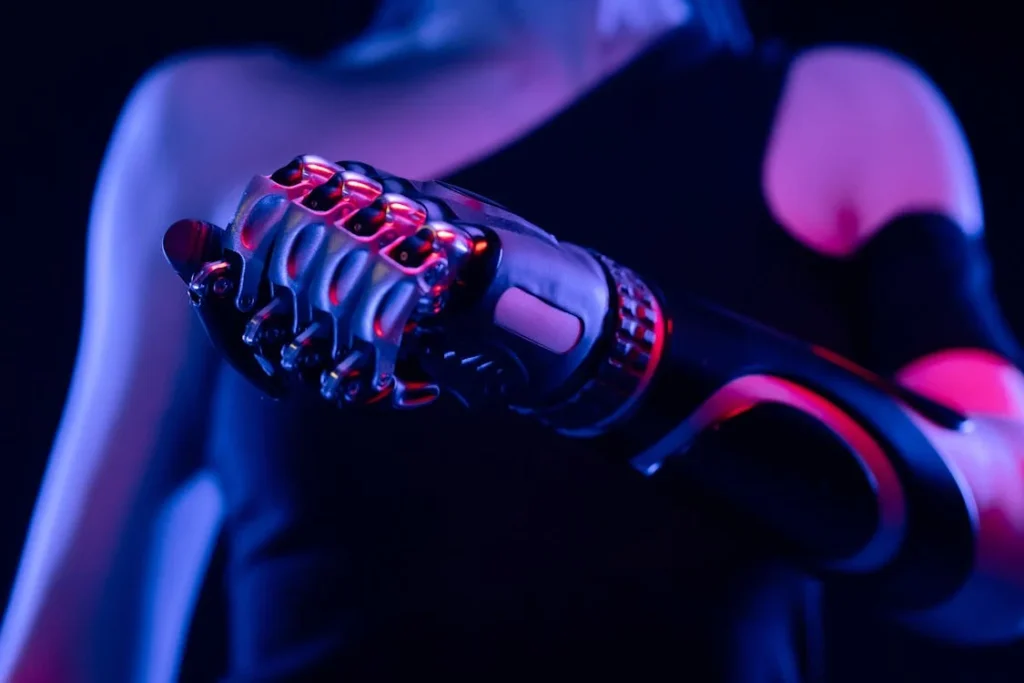
Innovations Driving Personalized Prosthetic Design
Custom prosthetics for trauma survivors have come a long way, especially in the last decade. Technology and research have opened new doors—making it easier, faster, and more effective to build devices that fit the unique needs of each person.
These innovations are not just high-tech for the sake of it. They are tools that respond directly to the real challenges faced by people recovering from limb trauma.
3D Printing: Speed, Precision, and Comfort
One of the biggest shifts in prosthetic design is the use of 3D printing. For trauma survivors, where each limb shape is different and often changes during healing, this technology offers an incredible advantage.
With 3D printing, custom sockets and limb parts can be created from exact digital scans. This means better fit, faster turnaround time, and easier adjustments.
Instead of waiting weeks or months for a socket mold to be made and tested, a user might get their first test-fit in days.
The materials used in 3D printing are lightweight, strong, and sometimes flexible, allowing for a more natural feel. They’re also easier to replace or modify when a user’s limb changes, which happens often in the months following trauma.
At Robobionics, we’ve embraced this technology not just to speed things up, but to allow deeper personalization for every user.
Whether someone needs a lighter limb for daily use or a rugged one for outdoor work, 3D design helps us build it quickly and accurately.
Myoelectric Technology for Upper Limb Cases
For trauma survivors who’ve lost a hand or arm, myoelectric prosthetics are a game changer. These devices pick up small electrical signals from the remaining muscles in the arm.
When the user contracts a muscle, the prosthetic hand opens, closes, rotates, or grips—depending on how it’s programmed.
This tech offers a huge leap in function, especially for those who want to return to tasks that require fine control—like typing, writing, or cooking.
Myoelectric arms can feel more natural because they respond to the user’s own movement rather than buttons or cables.
Training is a key part of success. The user has to learn how to isolate and control specific muscles. Occupational therapists play a big role here, helping the brain and body adapt to the new limb.
Over time, these movements become more automatic, and the prosthetic begins to feel like part of the body.
Sensor Integration and Feedback Systems
One of the challenges in using a prosthetic is the lack of natural sensation. With a real limb, your skin and nerves tell you how tightly you’re gripping something or where your arm is in space.
Prosthetics don’t automatically provide that kind of feedback—but things are changing.
New designs are starting to include sensors that measure pressure, grip strength, or even temperature. Some systems use vibrations to signal when the user is gripping too tightly.
Others use sound or visual cues. While still in the early stages, these features help users feel more in control and reduce the chances of accidents.
In future models, we may see sensory feedback becoming more advanced and even directly connected to nerves. This would allow a person not just to move their prosthetic hand, but to feel with it. That level of connection could change everything.
Modular and Activity-Specific Components
Trauma survivors often lead busy lives. They don’t want just one prosthetic—they want options that match their lifestyle. That’s why modular designs have become so important.
A person might use one socket, but swap out the foot, knee, or hand based on what they’re doing.
There might be a specialized arm for working on a farm, another one for exercising at the gym, and a lighter, simpler one for relaxing at home. The base remains the same, but the parts can change.
This flexibility means that users don’t have to choose between function and comfort. They can have both—depending on the situation. For someone rebuilding their life after trauma, this kind of freedom is powerful.
Virtual Fitment and Remote Support
Geography should never be a barrier to care. In countries like India, where people live far from prosthetic centers, traveling for each fitting can be difficult. That’s where virtual care comes in.
Some centers now offer remote assessments using phone cameras or 3D scan apps. Users can send in photos or videos of their limb, share feedback digitally, and receive guidance without needing to travel.
In many cases, test sockets or parts can be shipped to their home for trial, and adjustments can be suggested virtually.
This model, while still developing, is a major step forward in access. It doesn’t replace in-person care—but it can reduce the number of visits, lower costs, and make prosthetics available to more people, especially those recovering from sudden trauma with limited mobility.
Gamified Rehabilitation and Smart Training
Training with a new prosthetic can sometimes feel repetitive or frustrating.
To help users stay motivated, some clinics are turning to gamified rehab—using simple computer games or mobile apps to help people practice movements with fun, real-time feedback.
These tools track progress, reward consistency, and turn rehab into something more engaging. A user might play a game that teaches grip strength or reaction time using their myoelectric hand.
Or they might use an app that helps them work on balance and posture while wearing a lower limb prosthetic.
At Robobionics, we’ve seen how these approaches not only improve skill but also boost confidence. When someone sees real progress, even in a game, they feel empowered to keep going.
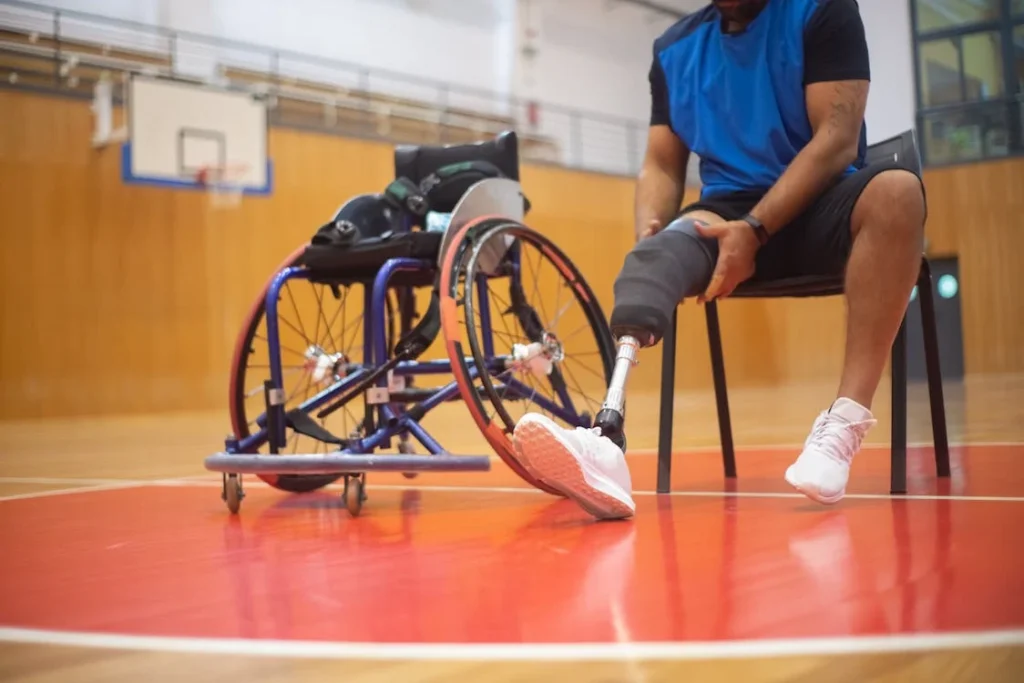
Looking Ahead: The Future of Personalized Prosthetics
As prosthetic technology continues to advance, so does the opportunity to offer even better care for trauma-based amputees.
But no matter how far we go with sensors, robotics, or software, the core idea remains the same: every limb, and every story, is unique. And every prosthetic should honor that uniqueness.
What lies ahead is not just smarter devices—it’s smarter systems of care. Systems that reach more people, adapt to real lives, and respect the emotional side of recovery just as much as the physical.
The future of custom prosthetic design is not only in labs or factories—it’s in conversations, in homes, and in the personal goals of people who want to live fully again after loss.
Beyond the Device: Restoring Identity and Choice
For a trauma survivor, a prosthetic is never just a tool. It becomes part of their new identity. It affects how they move through the world, how they’re seen by others, and how they see themselves.
That’s why customization goes beyond measurements and materials. It’s about asking the right questions: What matters to you? What do you want to be able to do again? What makes you feel like yourself?
Each answer shapes the design. It shapes the training. And it shapes the success of the final fit. A great prosthetic is not the most expensive or the most advanced—it’s the one that fits best into the user’s actual life.
At Robobionics, we’ve seen this firsthand. When people are part of their own design process—when their goals and feedback shape every detail—they use the device more, they feel more in control, and they recover faster.
This is the kind of care we believe in: personal, thoughtful, and deeply human.
Community and Accessibility Will Drive the Next Chapter
Technology is only as useful as it is accessible. That’s why future progress must focus on reach. In rural or underserved communities, access to trauma rehab and prosthetic care is still a challenge. Long travel, high costs, and lack of local clinics slow down recovery.
By building strong partnerships, training local experts, and offering digital tools, the prosthetic world can become more inclusive.
Community rehab programs, tele-consultations, and mobile fitment units can bring high-quality custom care to places that need it most.
The future also holds space for peer-led rehab—where experienced users guide new amputees through early decisions and emotional milestones. This model is already growing in India and globally, and it’s something we proudly support.
Conclusion
Trauma-based limb loss changes a person’s life in deep and lasting ways. But it doesn’t define them. With the right support, people rebuild—not just physically, but emotionally and socially. And at the heart of that support is a well-designed, truly personal prosthetic.
Customized prosthetic design is not just about fitting a device. It’s about restoring choice, ability, and confidence. It’s about giving someone back the freedom to live on their own terms.
As a company grounded in empathy, innovation, and hands-on care, we at Robobionics remain committed to building prosthetics that serve real lives, not just medical needs. Because we believe that every person deserves not just to recover—but to move forward with strength, purpose, and pride.



